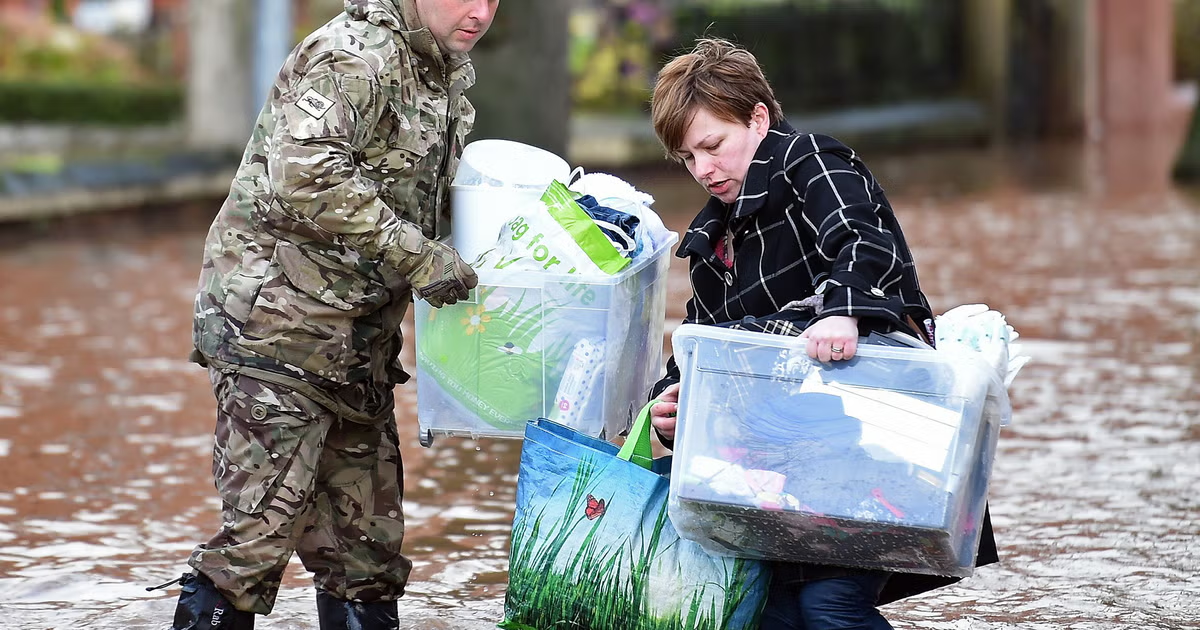As torrential rains and back-to-back storms continue to batter the United Kingdom, an unexpected army of volunteers has emerged across the country, stepping in where official emergency responses have struggled to keep up. From flooded streets in Yorkshire to storm-damaged villages in Wales, ordinary citizens have turned into first responders—clearing debris, rescuing stranded residents, and providing vital relief in the aftermath of one of Britain’s most chaotic storm seasons in recent years.
Communities Take Control
When Storm Isha and subsequent weather fronts swept across the UK this month, the scale of damage overwhelmed local authorities. Roads were submerged, homes inundated, and power lines knocked out. Yet before official rescue teams could arrive, community groups were already on the move. Equipped with pumps, sandbags, and makeshift tools, these volunteers—often organized through social media—have become an essential part of Britain’s evolving disaster response.
In towns like Shrewsbury, Derby, and York, community halls have transformed into local crisis centers. Volunteers coordinate through WhatsApp groups, tracking water levels and sharing live updates about which streets are most affected. Many bring their own equipment, while others pool donations to buy what they need. What began as a spontaneous act of goodwill is fast becoming a parallel emergency network.
One volunteer from North Yorkshire described their work bluntly: “We’re not trained, but we couldn’t stand by and watch people’s homes go under water. The council can’t be everywhere at once, so we filled the gap.”
Rising Frequency of Floods
Meteorologists say this pattern of extreme weather is becoming the new normal. Britain has seen record rainfall in recent months, with multiple “once-in-a-decade” storms occurring within weeks of each other. Experts warn that warmer air and sea temperatures are driving heavier rainfall, meaning that flooding could soon be an annual occurrence in certain parts of the country.
The Environment Agency has issued repeated flood warnings this autumn, urging residents to remain vigilant. Yet many communities have complained that warnings often come too late or that existing flood barriers fail under the sheer pressure of rising water. Critics argue that years of underinvestment in flood defences have left both rural and urban areas dangerously exposed.
A Growing Volunteer Force
The expansion of volunteer flood teams has been one of the most striking social phenomena of this crisis. Some of these groups, such as Flood Aid UK and local “Storm Responder” networks, now boast thousands of members. Their work goes beyond emergency rescues—they also help families clean mud-filled homes, replace damaged flooring, and distribute food and blankets to those displaced.
These volunteers often coordinate with firefighters and council workers but operate with remarkable autonomy. Their rapid mobilization has impressed emergency planners, yet it also underscores the inadequacy of formal systems designed to manage large-scale weather disasters.
A Midlands-based volunteer explained, “We can’t wait for the bureaucracy to move. People need help immediately, and we just act. It’s neighbors helping neighbors.”
Government Under Pressure
The government has praised the “extraordinary community spirit” shown by citizens but faces growing criticism for being reactive rather than proactive. Opposition leaders and environmental campaigners argue that Downing Street has failed to prepare for the escalating impact of climate change, especially on smaller communities.
Local councils say their budgets for flood prevention have been cut over the years, leaving drainage systems unmaintained and flood barriers incomplete. Many are calling for a national overhaul of storm response strategy—one that combines infrastructure investment with community-led preparedness programs.
A former Environment Agency official stated, “Volunteers shouldn’t be the first line of defense in a country as developed as the UK. Their work is heroic, but it’s a symptom of systemic failure.”
The Cost of Inaction
The economic and emotional toll of repeated flooding is immense. Homeowners face rising insurance premiums, while many find themselves unable to afford repairs. Businesses, particularly in rural areas, suffer prolonged closures after each major storm. Some towns have been hit so frequently that residents are beginning to move away entirely.
Experts warn that without major upgrades to flood management systems, the long-term costs could far exceed the price of preventive infrastructure. Climate scientists have urged the government to prioritize natural flood management strategies—such as restoring wetlands, planting trees, and redesigning drainage networks—to absorb excess water before it reaches residential areas.
Volunteer Stories of Resilience
Behind the statistics are countless human stories of courage and community solidarity. In Wales, a retired couple turned their caravan into a mobile aid station, offering hot drinks and food to cleanup crews. In northern England, teenagers have been spending their weekends clearing debris from local rivers to prevent further blockages. In Oxfordshire, a group of young parents created a “Flood Friends” app to coordinate supply runs for elderly neighbors.
For many, this volunteerism is about more than disaster relief—it’s a collective stand against helplessness. As one community organizer put it, “We can’t stop the storms, but we can make sure no one faces them alone.”
What Comes Next
With forecasts predicting continued heavy rain into winter, Britain’s flood volunteers show no signs of slowing down. Yet their growing role also raises questions about long-term sustainability. Many rely on donations or personal funds to cover expenses, and fatigue is setting in as floods become more frequent.
There are renewed calls for the government to formalize these volunteer efforts—providing funding, training, and coordination with official emergency services. Doing so, experts argue, could transform ad hoc community groups into a national resilience force.
A Nation in Transition
Britain’s storm season of 2025 may come to be remembered not just for the floods, but for how ordinary people responded. Across the country, the spirit of volunteerism has turned despair into determination, reminding the nation that community bonds can be as strong as any levee.
Still, without stronger government planning and decisive investment in climate adaptation, many fear that goodwill alone won’t be enough. The rain will keep coming. And unless the country builds faster, smarter, and fairer defences, the volunteers’ work will remain a heroic—but temporary—solution to a growing national crisis.
















Leave a Reply